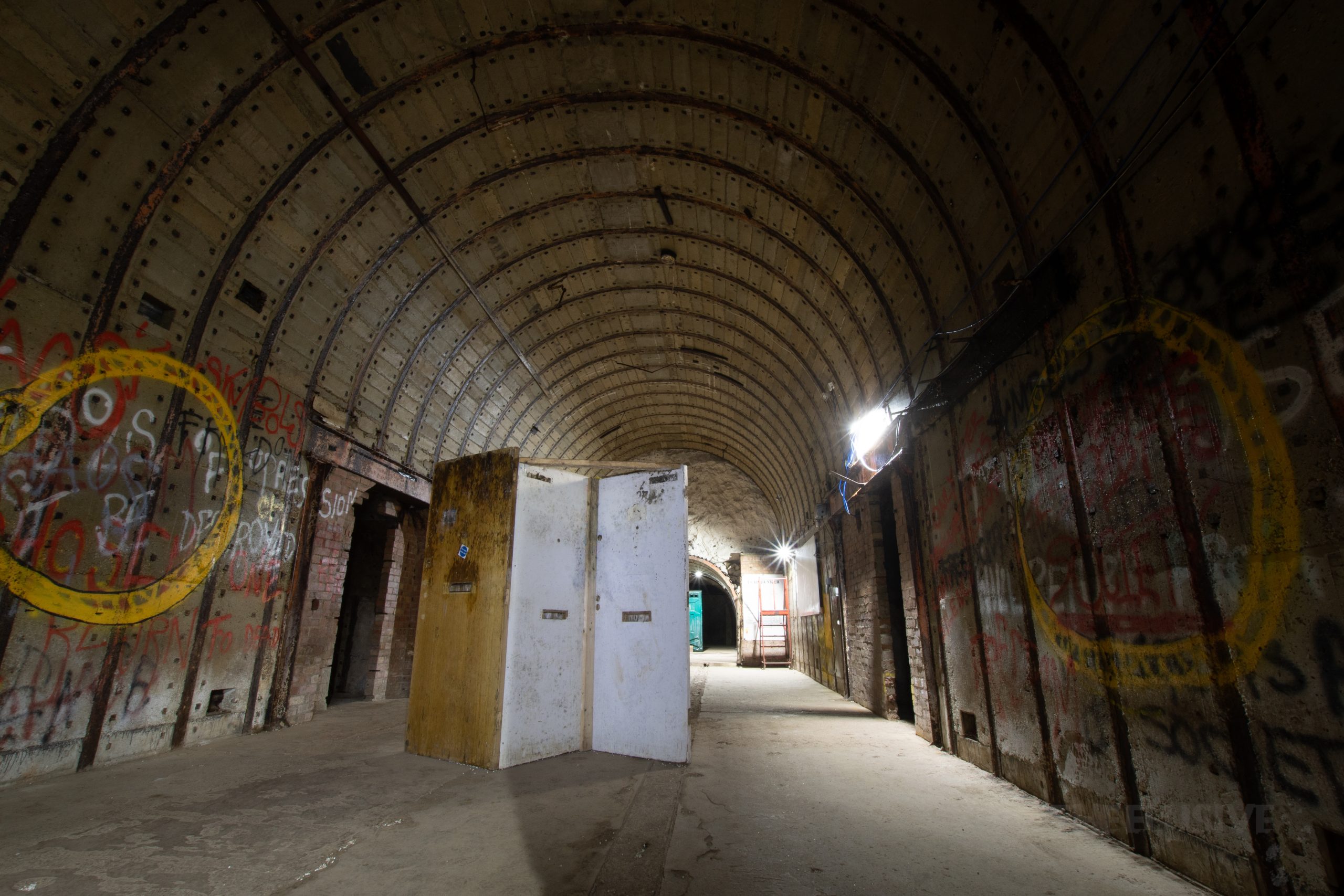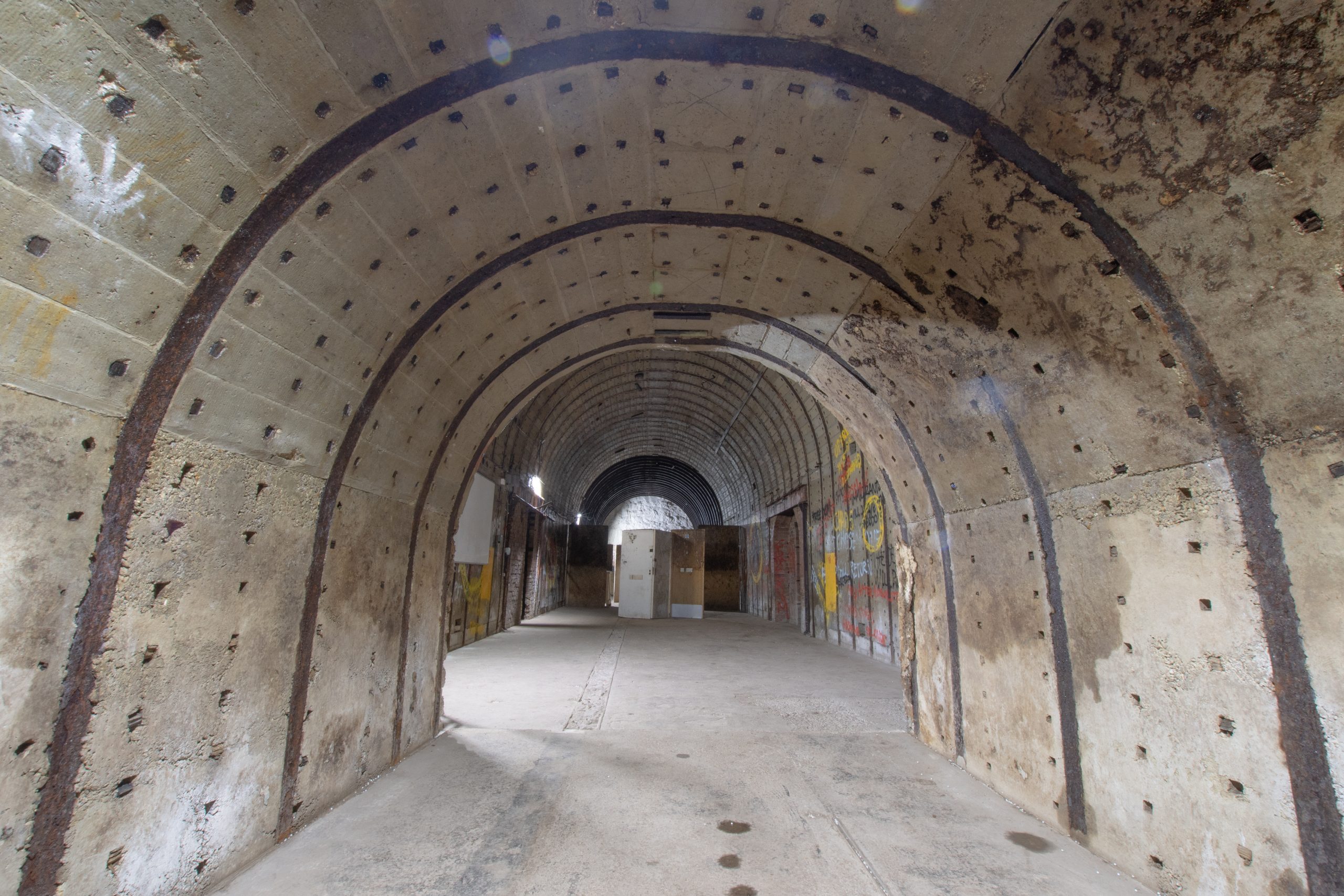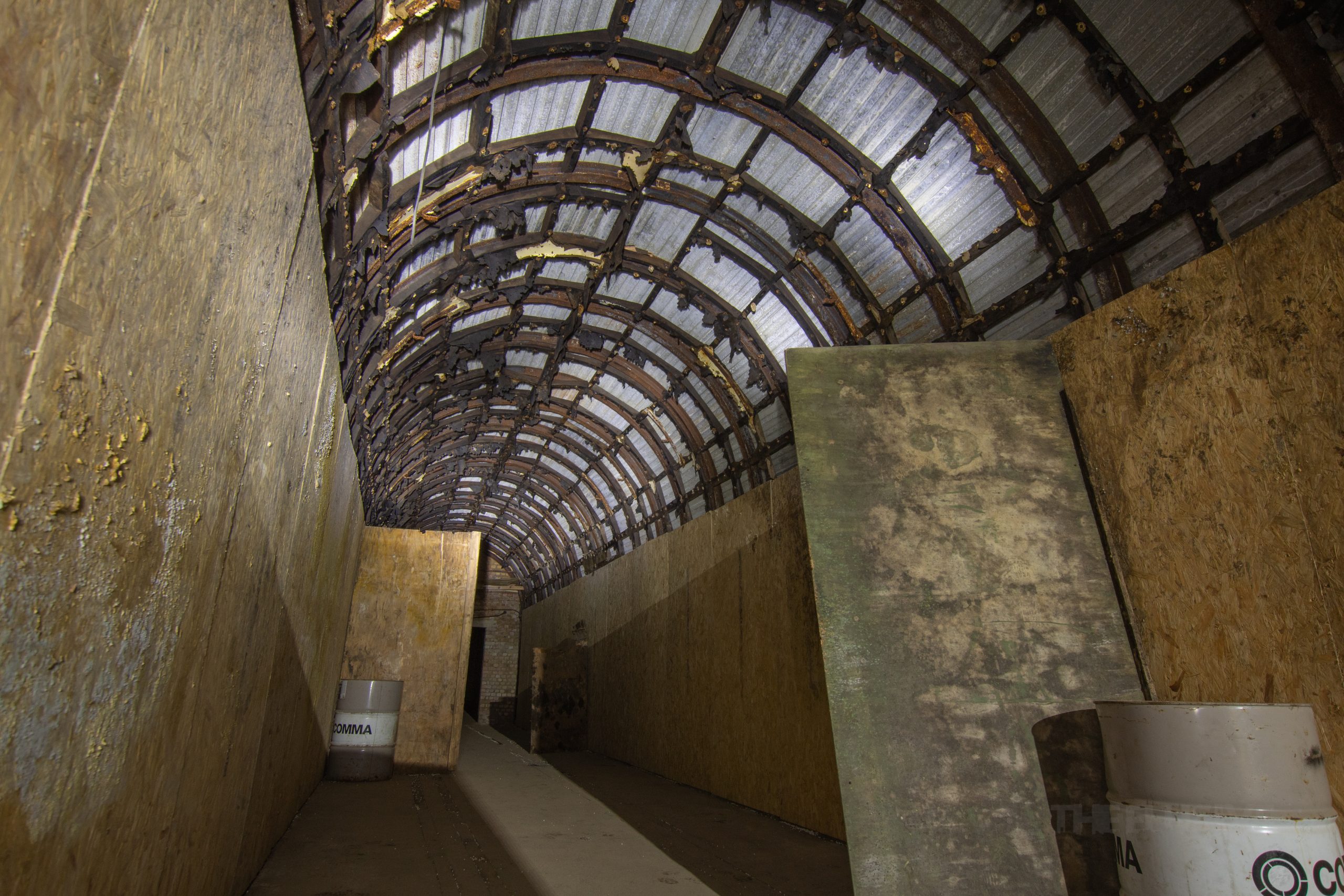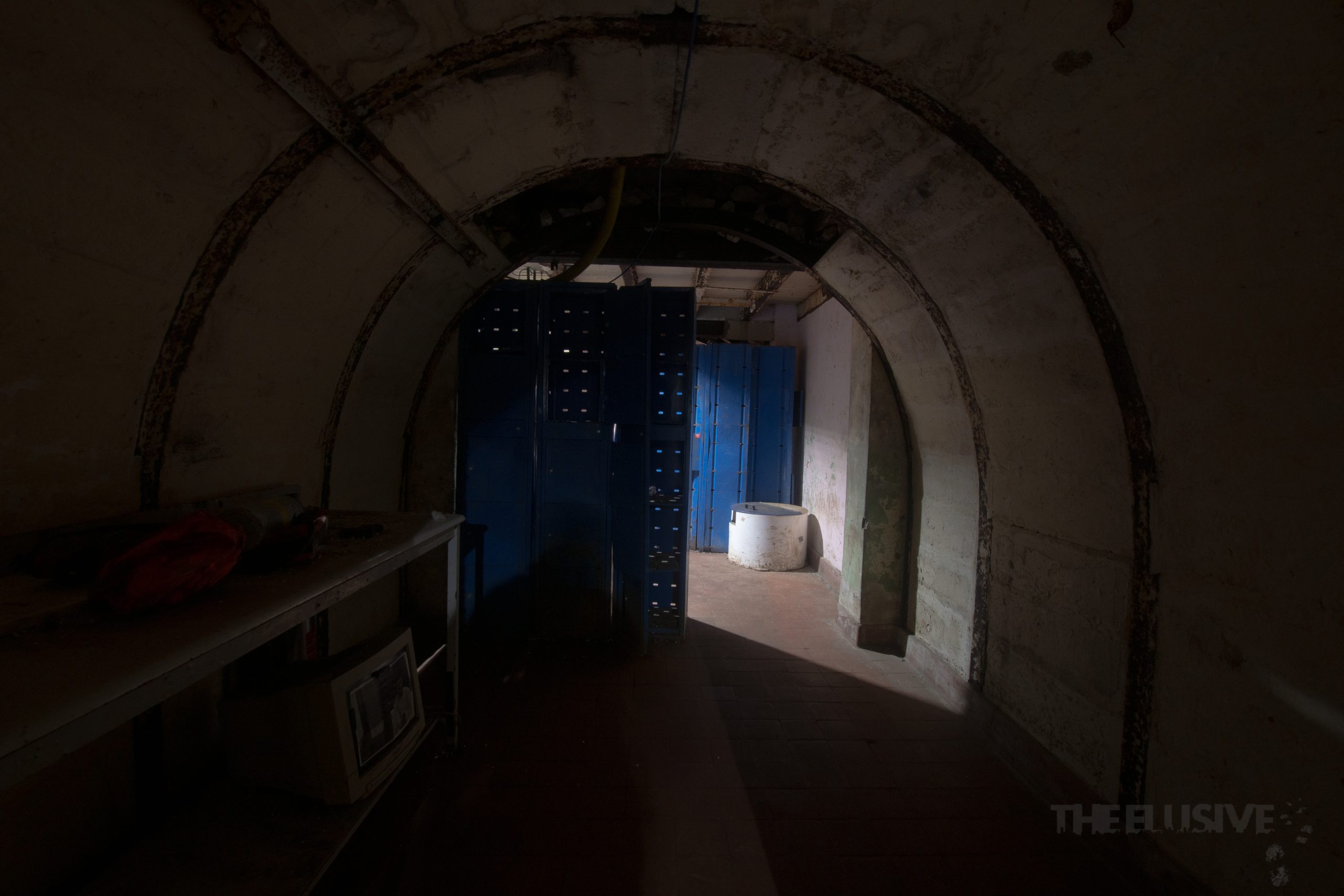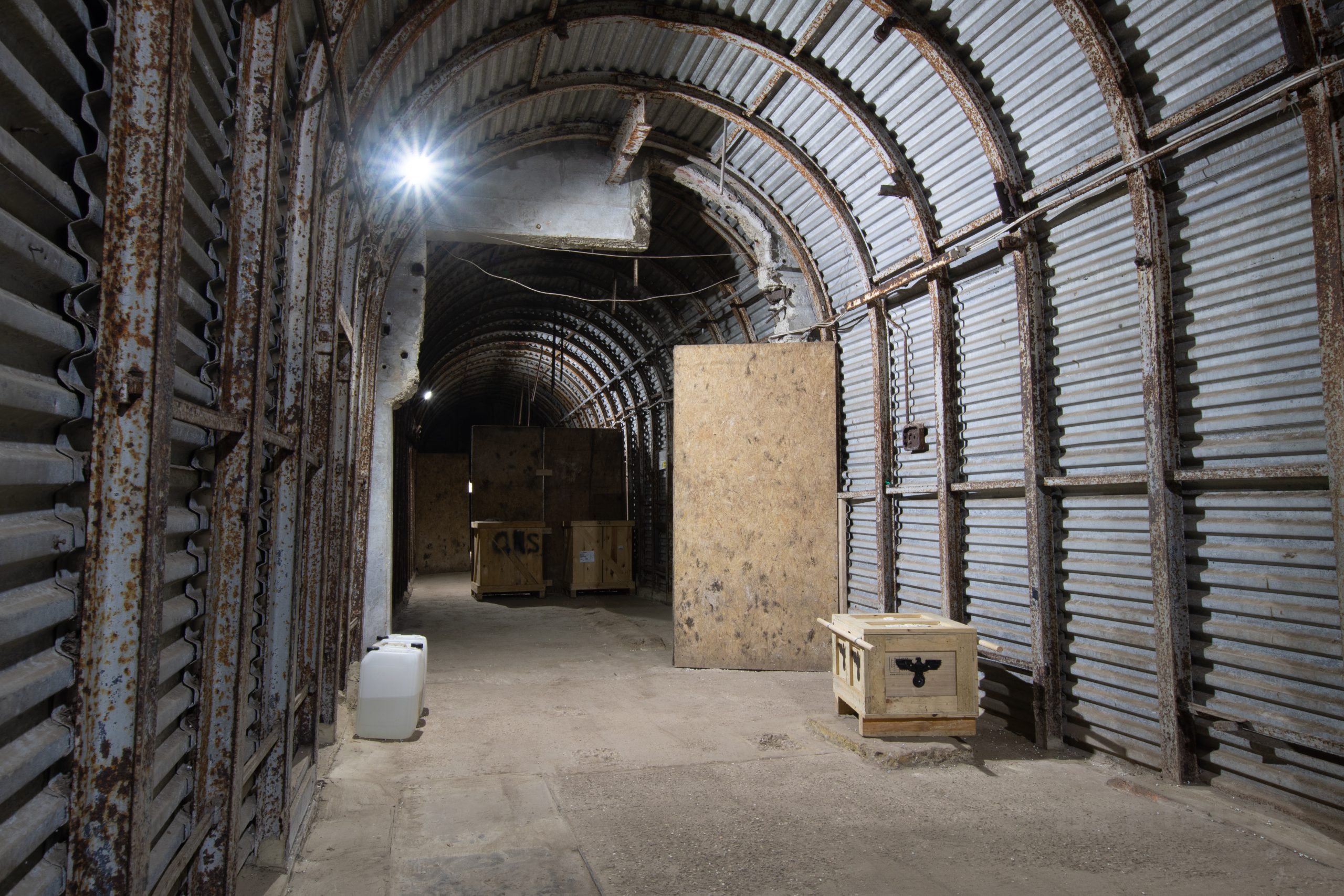Stunning Permission visit to a place full of history.
During WWII an Underground Headquarters – UGHQ (for operation Overlord) was built beneath the Fort. This provided a bombproof, comprehensive Naval, Army and Air Force Operation Control and Communication Centre – call sign ‘MIN’. The headquarters’ main role on D-Day was gathering information and coordinating the Allied naval forces. Reports from radar stations were crossed-referenced with messages from shipping to provide an accurate picture of what was happening in the English Channel. This information was then plotted on a large table map at the Fort, and was passed to the Allied commanders nearby at Southwick House. On the 6 June 1944 there were 700 staff working underground.
http://www.portsdown-tunnels.org.uk/index.html
As well as the UGHQ, over 1000 people were based above ground around the fort, at various headquarters associated with the planning for D-Day. These included the army and navy headquarters for the British/Canadian D-Day beaches, Second British Army and the Naval Commander Eastern Task Force respectively. An access ramp was built down into the east ditch (which still exists), where many of these personnel were billeted.
From the very first conference of the Anglo-American Allies held on the 31 December 1941 in Washington DC, the US committed itself to prepare for landings on the European mainland. The Americans feared a Russian collapse and began planning Operation Round-up to invade northern France by April 1943 at the latest. However the British resisted being hasty especially after the disastrous raid on Dieppe in August 1942. At an Anglo-American strategy conference in Quebec in August 1943 the Allies again agreed to the seaborne invasion of France, now codenamed Operation Overlord, and the Americans insisted that a provisional date of 1 May 1944 be set.
The underground workings at Fort Southwick were excavated by 172 Tunnelling Company Royal Engineers. Work was started on 16 February 1942, probably as a direct result of the Washington Conference mentioned above, and the complex completed during December 1942. The operation tunnels were about 100 feet beneath the surface. Additional galley facilities were provided in the Central Caponier of Fort Southwick proper. Air conditioning and gas filtration was installed as well as fresh water storage. Access was via 3 notorious staircases from within Fort Southwick – there was no lift. Because of its D-Day connection, its existence was a very closely guarded secret, which still seems to persist even today. Southwick House located in the village of Southwick a mile north from the Fort, was used as the headquarters for SHAEF (Supreme Headquarters Allied Expeditionary Force) although the actual HQ, on and for some time after D-Day, was a tent in nearby woods.
There is a lot of confusion surrounding the correct name of the tunnel complex which I will try to either sort out or compound here. It has variously been referred to as:
Combined Operations Headquarters – COHQ
Combined Headquarters – CHQ
Underground Headquarters – either UGHQ or UHQ.
COHQ or CHQ should refer to the staff that manned the place, not to the actual location itself. However the Combined Operations part of COHQ is mis-leading because this was a separate military entity which dealt with offensive raids against occupied Europe. CHQ was a generic term used to describe tri-service staffing. The correct term for the command and control centre under Fort Southwick is Underground Headquarters which I have abbreviated to UGHQ.
As part of the Fort Southwick UGHQ construction project, a secure underground radio station was also built in the Paulsgrove Chalk Pit. It was once thought that a tunnel was also constructed linking the UGHQ to the Oil Fuel Reservoir which lies to the west but there is no evidence of this.
Two other back-up UGHQs were built, in case Fort Southwick was put out of action. Some accounts state that the primary one was under Wentworth Golf Course, but it was in fact at HMS Forward Newhaven. It has been suggested that some functions of the UGHQ were duplicated at Western Heights Dover, although this may just be speculation. Two other forts on Portsdown were also held in reserve, Forts Widley and Purbrook, and some of the telephone poles which connected the 3 forts can still be seen today.
The UGHQ complex was partly re-used during the Cold War as a Communication Centre. In 1974 a replacement COMMCEN was constructed on the Parade Ground.
Outside the Fort
Below the fort on the southern slope of Portsdown are 3 portals which were used as the emergency exits / ventilation adits for the underground control centre. Two of these (Nos 1 and 2, when counting from West to East) have been sealed-up and covered over, but No 3 (the Eastern most) still exists and has been renovated some time in the mid 1990s.
A purpose built access road (with un-manned barrier controlled access) leads from the main road to the west of Fort Southwick down to a fenced enclosure which contains the three escape tunnels. Just before the enclosure gate on the left is a ruined brick built structure, possibly a guard post, about 20 feet square.
The spoil from the underground workings appears to have been tipped straight down the south side of the hill, but is not the case. This prominent Portsmouth landmark is in fact composed of waste chalk generated during the construction of all the Portsdown Forts during the 1860s.
I remember looking down tunnel No 3 when I was 8 years old in the early 1960s. It was secured by a strong galvanised steel gate, and there were bulkhead lights burning all the way along its length. Little did I know then that I was staring into the heart of a NATO comms centre.
The future
In the late 1990s the underground complex was strengthened and stripped bare. Hampshire County Council expressed interest in purchasing this property from the MOD when it became available, because of its uniqueness and importance during WWII. However because of budget cuts they did not bid for the property when it came up for sale in 2003. Around ten bids for the Fort were received and it was eventually sold to the “Fort Southwick Company Limited”.
Fort Southwick Company Limited
The new owners are full of enthusiasm and there is no doubt that they have the Fort’s, and the UGHQ’s, best interests at heart. Obviously as a business they have to make a bit from their considerable investment, and this is to be achieved by letting existing post-war buildings to other companies, and by converting the Barrack Block to luxury apartments. They have many plans for the future including some much needed renovations and most importantly public guided tours by:
Opening the Central Caponier as a museum depicting the fort’s history in the Victorian and WWII eras
Exhibiting their collection of Military vehicles on the parade ground
Please note that no part of the fort is open for public viewing and the Fort’s owners cannot cater for casual visitors.



